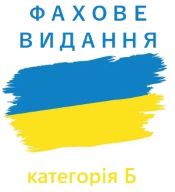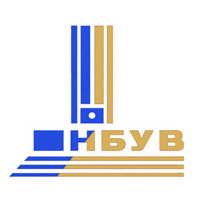Metal melt clusters, their geometry and destruction at heating
DOI:
https://doi.org/10.31498/2225-6733.33.2016.104464Keywords:
molten metal, X-ray analysis, a cluster, its geometric shapeAbstract
Possibilities of using X-rays in the study of the structure theory of liquid metal melts and the published data results have been investigated in order to improve this theory. In the theory of liquid metal melts there still remains a lot of subjects under discussions now. For example according to modern concepts of the liquid structure it includes metal clusters and disordered melt zone. Both structures are constantly exchanging atoms. According to expert information, for example, some authors (V.I. Arkharov, B.A. Baum et al.) believe that the overheating of the melt by 100-200 degrees above the liquidus point leads to complete destruction of the cluster. According to others, the destruction of clusters occurs only close to the boiling temperature of the melt. Besides it is not clear whether a cluster is a ball or convex polyhedron? As a result of high-temperature X-ray studies of liquid metals we have found that the genetic structure of a liquid metal depends on the crystal system of solid metal crystals. X-rays interference from the liquid metal clusters may occur when there are two or more rows of vibrating atoms, arranged in parallel planes. Therefore many authors who consider clusters to be spherical are wrong. Apparently a cluster is a parallelogram or a convex polyhedronReferences
Список использованных источников (ГОСТ):
Вертман А.А. Свойства расплавов железа / А.А. Вертман, А.М. Самарин. – М. : Наука, 1969. – 280 с.
Батаев В.А. Методы структурного анализа материалов и контроля качества деталей / В.А. Батаев, А.А. Батаев, А.А. Алимов. – М. : Флинта; Наука, 2007. – 224 с.
Данилов А.И. О характере упорядоченности атомной структуры жидких металлов / А.И. Данилов, В.И. Данилов, Е.З. Спекторю // Проблемы металловедения и физики металлов. – М. : Металлургиздат, 1952. – № 3. – С. 336-354.
О структуре ближнего порядка в жидком железе, кобальте и никеле / Е.В. Клименков, П.В. Гельд, Б.А. Баум, Ю.А. Базин // Доклады Академии наук СССР. – 1975. – Т. 222, № 1. – С. 71-73.
Слуховский О.И. Структурные изменения жидкого железа / О.И. Слуховский, А.С. Ляшко, А.В. Романова // Украинский физический журнал. – 1975. – Т. 20, № 12. – С. 1961-1965.
Ватолин И.А. Влияние температуры на структуру жидкого алюминия / И.А. Ватолин, Э.А. Пастухов, В.Н. Сермягин // Доклады Академии наук СССР. – 1975. – Т. 222, № 3. – С. 641-642.
Вагнер К.Н. Температурная зависимость интерференционной функции (структурного фактора) жидких металлов / К.Н. Вагнер // Жидкие металлы. Материалы третьей международной конференции по жидким металлам : пер. с англ. – М. : Металлургия, 1980. – С. 92-98.
Арсентьев П.П. Металлические расплавы и их свойства / П.П. Арсентьев, Л.А. Коледов. – М. : Металлургия, 1976. – 376 с.
Stewart G.X. X-ray diffusion in water: the nature of molecular association / G.X. Stewart // Physical Review. – 1931. – V. 37, № 1. – Р. 9-16.
Уманский Я.С. Рентгенография металлов / Я.С. Уманский. – М. : Машгиз, 1967. – 236 с.
Филлипов Е.С. Строение, физика и химия металлических расплавов / Е.С. Филлипов. – М. : Металлургия, 1995. – 304 с.
Скребцов А.М. Особенности структурных превращений металлических расплавов в интервале температур ликвидус кипение / А.М. Скребцов // Сталь. – 2010. – № 10. – С. 14-19.
Дутчак Я.И. Рентгенография жидких металлов / Я.И. Дутчак. – Львов : Вища школа, 1977. – 163 с.
Ладьянов В.И. Оценка времени жизни кластеров в жидких металлах / В.И. Ладьянов, И.А.Новохатский, С.В. Логунов // Известия Академии наук СССР. Металлы. – 1995. – № 2. – С. 13-22.
Пат. 23458 Україна, МПК5 G 01 N 9/24, G 01 N 33/20. Спосіб визначення кількості атомів в кластері металевого розплаву (спосіб Скребцова О.М.) / О.М. Скребцов. – № u20070083; заявл. 02.01.07; опубл. 25.05.07, Бюл. № 7.
Рыжиков А.А. Некоторые особенности процессов плавления и структуры жидких металлов / А.А.Рыжиков, И.В. Гаврилин // Прогрессивная технология литейного производства. – Горький : Волго-Вятское книжное издательство, 1969. – С. 3-10.
References:
Vertman A.A. Svoistva rasplavov zheleza [The properties of iron melts]. Moscow, Nauka Publ., 1969. 280 p. (Rus.)
Bataev V.A., Bataev A.A., Alimov A.A. Metody strukturnogo analiza materialov i kontrolia kachestva detalei [The methods of the structural analysis of materials and quality control of parts]. Moscow, Flint; Science Publ., 2007. 224 p. (Rus.)
Danilov A.I., Danilov V.I., Spektoriu E.Z. O kharaktere uporiadochennosti atomnoi struktury zhidkikh metallov [The nature of the orderliness of the atomic structure of liquid metals]. Problemy metallovedeniia i fiziki metallov – Problems of Metallurgy and Metal Physics, 1952, no. 3, pp. 336-354. (Rus.)
Klimenkov E.V., Held P.V., Baum B.A., Bazin J.A. O strukture blizhnego poriadka v zhidkom zheleze, kobal'te i nikele [On the short-range order structure in the liquid iron, cobalt and nickel]. Doklady Akademii nauk SSSR – Reports of the USSR Academy of Sciences, 1975, vol. 222, no. 1, pp. 71-73. (Rus.)
Sluhovsky O.I., Lyashko A.S., Romanova A.V. Strukturnye izmeneniia zhidkogo zheleza [Structural changes of liquid iron]. Ukrainskii fizicheskii zhurnal – Ukrainian journal of physics, 1975, vol. 20, no. 12, pp. 1961-1965. (Rus.)
Vatolin I.A., Pastuhov E.A., Sermyagin V.N. Vliianie temperatury na strukturu zhidkogo aliuminiia [Effect of temperature on liquid aluminum structure]. Doklady Akademii nauk SSSR – Reports of the USSR Academy of Sciences, 1975, vol. 222, no. 3, рp. 641-642. (Rus.)
Wagner K.N. Temperaturnaia zavisimost' interferentsionnoi funktsii (strukturnogo faktora) zhidkikh metallov [The temperature dependence of the interference function (structural factor) of liquid metals]. Zhidkie metally. Materialy tret'ei mezhdunarodnoi konferentsii po zhidkim metallam –Liquid metally. Proceedings of the Third International Conference on liquid metals, 1980, pp. 92-98. (Rus.)
Arsent'ev P.P. Metallicheskie rasplavy i ikh svoistva [The metal melts and their properties]. Moscow, Metallurgy Publ., 1976. 376 p. (Rus.)
Stewart G.X. X-ray diffusion in water: the nature of molecular association. Physical Review, 1931, vol. 37, no. 1, pp. 9-16.
Umansky Y.S. Rentgenografiia metallov [Radiography metals]. Moscow, Mashgiz Publ., 1967. 236 p. (Rus.)
Filippov E.S. Stroenie, fizika i khimiia metallicheskikh rasplavov [The structure, physics and chemistry of metal melts]. Moscow, Metallurgy Publ., 1995. 304 p. (Rus.)
Skrebtsov A.M. Osobennosti strukturnykh prevrashchenii metallicheskikh rasplavov v intervale temperatur likvidus kipenie [Features of structural transformations of metal melts in the temperature range of the liquidus point]. Stal' – Steel, 2010, no. 10, pp. 14-19. (Rus.)
Dutchak Y.I. Rentgenografiia zhidkikh metallov [Radiography of liquid metals]. Lviv, Vishcha School Publ., 1977. 163 p. (Rus.)
Ladyanov V.I., Novohatsky I.A., Logunov S.V. Otsenka vremeni zhizni klasterov v zhidkikh metallakh [Estimation of the lifetime of clusters in liquid metals]. Izvestiia Akademii nauk SSSR. Metally – Proceedings of the USSR Academy of Sciences. Metals, 1995, no. 2, pp. 13-22. (Rus.)
Skryebtsov A.M. Sposіb viznachennia kіl'kostі atomіv v klasterі metalevogo rozplavu (sposіb Skrebtsova O.M.) [The method of determining the number of atoms in the cluster metal melt (method Skryebtsova O.M.)]. Patent UA, no. 23458A, 2007. (Ukr.)
Ryzhikov A.A., Gavrilin I.V. Nekotorye osobennosti protsessov plavleniia i struktury zhidkikh metallov [Some features of the melting process and the structure of liquid metals]. Progressivnaia tekhnologiia liteinogo proizvodstva – Advanced foundry technology, 1969, pp. 3-10. (Rus.)
Downloads
How to Cite
Issue
Section
License
The journal «Reporter of the Priazovskyi State Technical University. Section: Technical sciences» is published under the CC BY license (Attribution License).
This license allows for the distribution, editing, modification, and use of the work as a basis for derivative works, even for commercial purposes, provided that proper attribution is given. It is the most flexible of all available licenses and is recommended for maximum dissemination and use of non-restricted materials.
Authors who publish in this journal agree to the following terms:
1. Authors retain the copyright of their work and grant the journal the right of first publication under the terms of the Creative Commons Attribution License (CC BY). This license allows others to freely distribute the published work, provided that proper attribution is given to the original authors and the first publication of the work in this journal is acknowledged.
2. Authors are allowed to enter into separate, additional agreements for non-exclusive distribution of the work in the same form as published in this journal (e.g., depositing it in an institutional repository or including it in a monograph), provided that a reference to the first publication in this journal is maintained.









